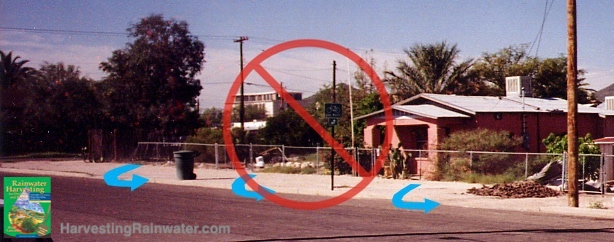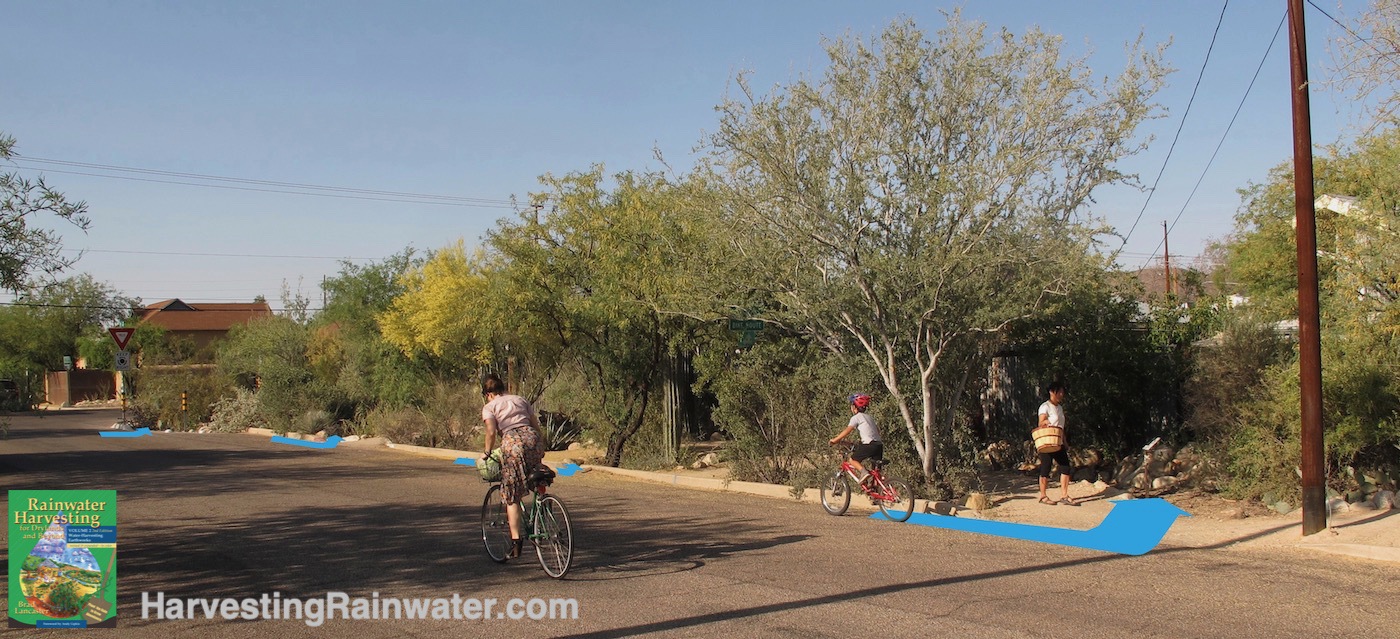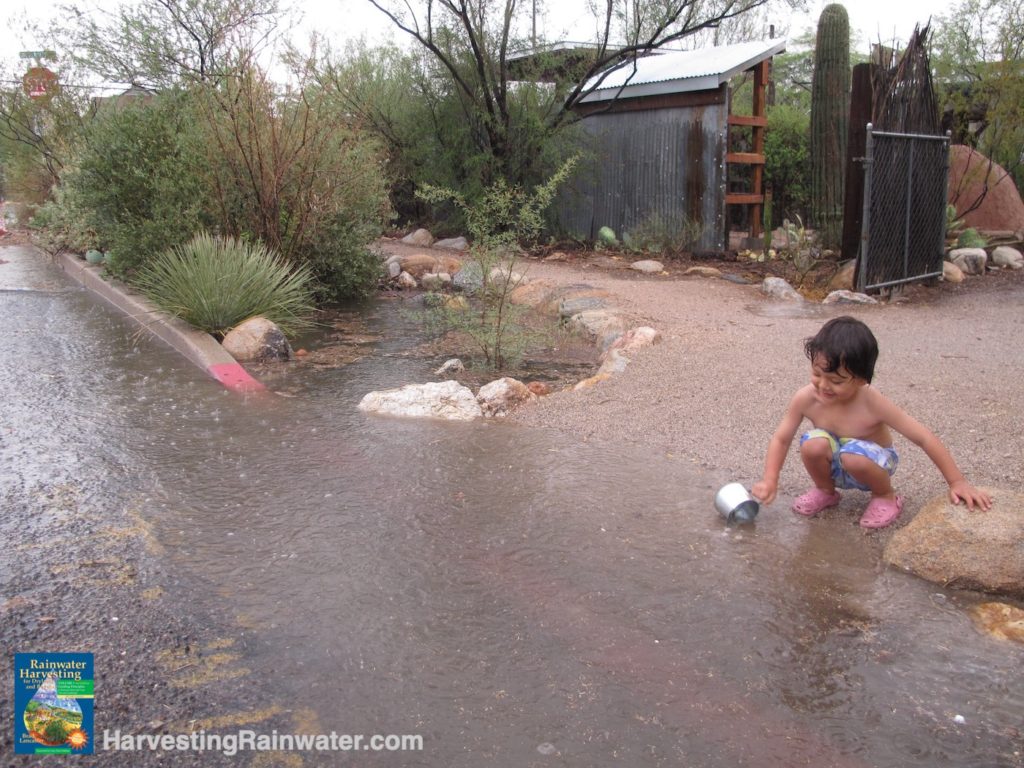Passive water harvesting case study
Dunbar/Spring Neighborhood Native Food Forest.
Tucson, Arizona, USA.
Latitude 32.2˚N.
Elevation 2,555 feet (779 meters).
Tucson, Arizona, USA. Average annual precipitation 11 inches (280mm)…
Ideally, you plant the rain before you plant your plants. That way you are set up from the very start to passively harvest rain, all other free on-site waters, and sponge-like fertile organic matter–because gravity moves them all to the low spots.
Though, you can also implement passive rain-planting strategies in existing landscapes.
Both were done in the Dunbar/Spring neighborhood in the dryland city of Tucson, Arizona which is the third fastest warming city in the U.S. Though we can, and are, reducing urban temperatures by over 10˚ F (5.5˚ C) degrees in the shade of native vegetation passively irrigated with harvested rain and street runoff.
Working with neighbors we’ve planted over 1,600 native food-bearing trees and hundreds of multi-use native understory plants—most of this in the neighborhood’s public rights-of-ways. Curb cuts and curb cores direct street runoff to street-side and in-street planting basins. This way the street freely irrigates the vegetation that grows to beautify and shelter the street. And we have transformed the neighborhood from once having some of the least tree canopy in the city to having some of the most.
These efforts harvest over 1 million gallons of stormwater per year that previously wastefully drained out of the neighborhood. This saves huge amounts of water, since the stormwater-irrigated vegetation does not need supplemental water once established. It also saves energy since water does not need to be pumped, and the sheltering effect of the vegetation reduces the need for, and energy use of, mechanical heating and cooling of neighborhood buildings. It also reduces downstream flooding. But we’ve only just begun, we can, and need to, do 20 times this in our neighborhood. Thus we keep on planting more rain and life.


Street runoff flows over the low point of the dipped curb where there was once a driveway. A second rain garden is just outside the right-hand side of the photo.
Reproduced with permission from Rainwater Harvesting for Drylands and Beyond, Volume 1, 3rd Edition by Brad Lancaster.

Reproduced with permission from Rainwater Harvesting for Drylands and Beyond, Volume 1, 3rd Edition by Brad Lancaster.
For more on the Dunbar/Spring neighborhood efforts see:

• DunbarSpringNeighborhoodForesters.org
• Before & after photos of green infrastructure in Dunbar/Spring
and
See the new, full-color, revised editions of Brad’s award-winning books
– available a deep discount, direct from Brad:

Volume 1

